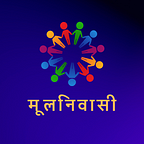BJPs Rise to Power Has Undone the Gains of the Bahujan Mobilization
There was a time when the power structure had gravitated towards the Bahujans in the aftermath of the Mandal movement. However, after the ascension of the right-wing BJP, the hard-earned gains made by the bahujans is slowly but surely getting undone by the Sangh Parivar cronies in the BJP.
Let us take the example of a few states. In Bihar, Lalu Prasad Yadav, who represented the OBC face has been put behind bars and Nitish Kumar is firmly entrenched in the Chief Minister’s chair. One might argue that Nitish Kumar is also an OBC, but that’s missing the point.
Nitish is nothing without the support of the BJP and it is the latter that has been calling the shots in Bihar’s power corridors since it is the senior partner in Bihar’s NDA alliance. Also, Nitish has been arm twisted into submission by Modi and Shah duo whose ploy of jailing Lalu had the required demonstration effect on Nitish to fall in line.
Moving to Bihar’s neighbour, U.P., the alternating power spells between SP and BSP has ended thanks to BJPs decisive win in the last assembly elections. Here too, the bahujans have been relegated in the background with the rise of the thakurs and the brahmins, led by Yogi Adityanath, in the state’s power structure.
In Haryana, Manohar Lal Khattar, an upper caste Khatri was handed over the CMs chair in spite of being a political lightweight thanks to his close association with the RSS.
Apart, from the CMs caste, the most telling statistic is the caste-wise ticket allocation by the BJP that is ruling in 17 out of 28 states as on February 2021.
In the recently concluded Bihar elections, BJP handed over tickets to 51 upper caste candidates out of 110 candidates even though upper castes constitute only 16 percent of Bihar’s population.
It’s the same story in Uttar Pradesh where 48.2% BJP MLAs are upper caste belonging to Brahmin, Bania, and Thakur communities. Consequently, the share of OBC MLAs, especially Yadavs, has fallen below 30%. Simultaneously, the share of Jatav MLAs has also fallen while that of Non-Jatav MLAs has risen among SC MLAs.
The Yadavs and Jatavs have been traditionally opposed to BJP so it devised a clever strategy of uniting the non-Yadav OBCs and non-Jatav SCs while undercutting the Yadavs and Jatavs. This strategy has paid off rich returns for the BJP in the assembly as well as Lok Sabha elections.
So, does all this point to a Hindu consolidation where caste identities are getting blurred?
Far from it. In fact, the revival of the upper caste politics has led to marginalization of the bahujans in the country’s heartland. The atrocities against the Dalits and other marginalized groups such as the lower OBCs and the Muslims is increasing at an alarming rate.
OBCs and SCs are steadily being ejected from government posts through a process of de-reservation and privatization of the public sector.
While the Bahujan revels in his new found masculinity by suppressing the helpless Muslim, little does he realize that the ground beneath his feet is being cut by the upper caste leaders that he reveres. The bahujan is being misled but he does not recognize it.
The Bahujan jobs are being snatched, they are the worst sufferers of the abrupt COVID lockdown, their farm income will be at the mercy of corporates thanks to the three farm laws.
The intellectuals who are supportive of the Bahujan movement are languishing in jail for more than 2 years now. All democratic voices are being muffled under the garb of nationalism and national security.
When will the Bahujan wake up from his sleep or will that day never dawn?
